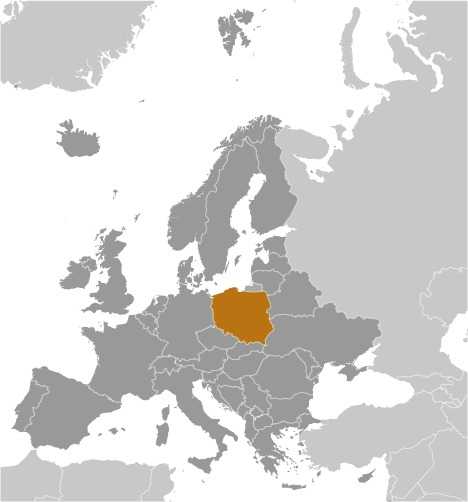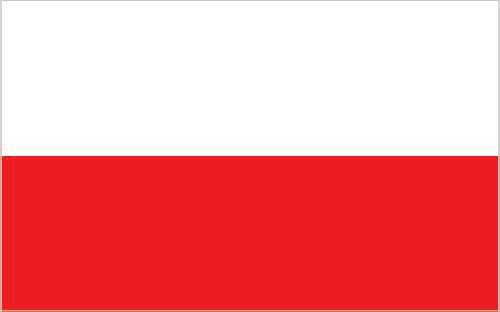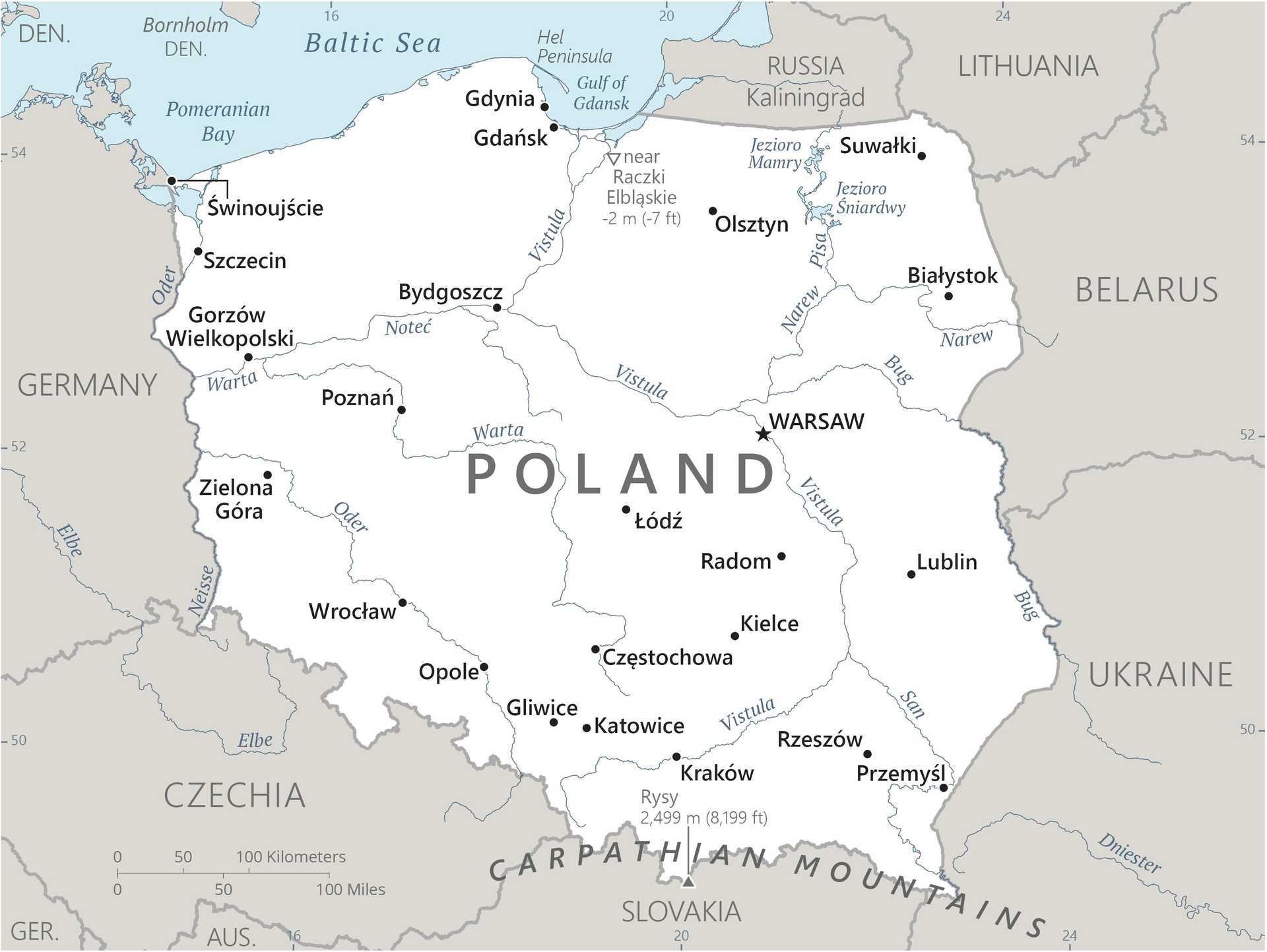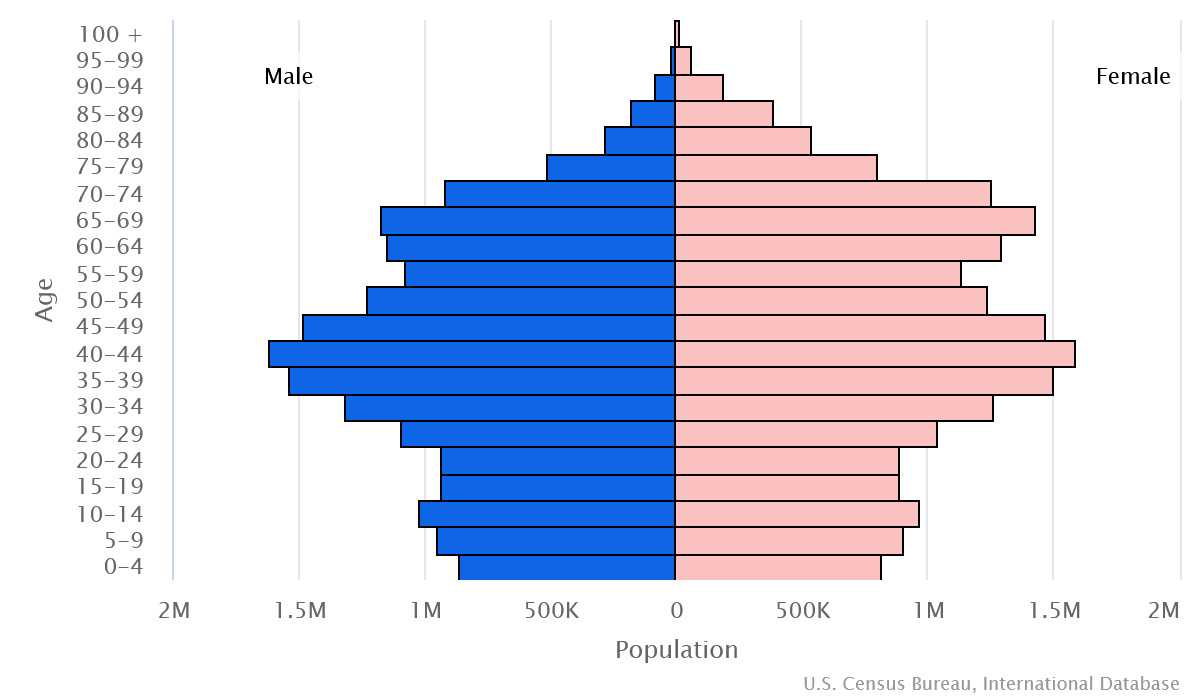Introduction
Background
By the mid-16th century, the Polish-Lithuanian Commonwealth ruled a vast tract of land in Central and Eastern Europe. During the 18th century, internal disorder weakened the nation, and in a series of agreements between 1772 and 1795, Russia, Prussia, and Austria partitioned Poland among themselves. Poland became a Soviet satellite state after World War II. Free elections in 1989 and 1990 brought the communist era to a close.
Geography
Area
total : 312,685 sq km
land: 304,255 sq km
water: 8,430 sq km
Climate
temperate with cold, cloudy, moderately severe winters with frequent precipitation; mild summers with frequent showers and thundershowers
Natural resources
coal, sulfur, copper, natural gas, silver, lead, salt, amber, arable land
People and Society
Population
total: 38,746,310
Ethnic groups
Polish 96.9%, Silesian 1.1%, German 0.2%, Ukrainian 0.1%, other and unspecified 1.7% (2011 est.)
Languages
Polish (official) 98.2%, Silesian 1.4%, other 1.1%, unspecified 1.2%; note - data represent the language spoken at home; shares sum to more than 100% because some respondents gave more than one answer on the census; Poland ratified the European Charter for Regional or Minority Languages in 2009 recognizing Kashub as a regional language, Czech, Hebrew, Yiddish, Belarusian, Lithuanian, German, Armenian, Russian, Slovak, and Ukrainian as national minority languages, and Karaim, Lemko, Romani (Polska Roma and Bergitka Roma), and Tatar as ethnic minority languages (2011 est.)
Religions
Catholic 84.6% (Roman Catholic 84.6% and other Catholic 0.3%), Orthodox 1.3% (almost all are Polish Autocephalous Orthodox), Protestant 0.4% (mainly Augsburg Evangelical and Pentecostal), other 0.3% (includes Jehovah's Witness, Buddhist, Hare Krishna, Gaudiya Vaishnavism, Muslim, Jewish, Church of Jesus Christ), unspecified 13% (2022 est.)
Population growth rate
-1% (2024 est.)
Government
Government type
parliamentary republic
Capital
name: Warsaw
Executive branch
chief of state: President Andrzej DUDA (since 6 August 2015)
head of government: Prime Minister Donald TUSK (since 11 December 2023)
Legislative branch
description: bicameral Parliament consists of:
Senate or Senat (100 seats; members directly elected in single-seat constituencies by simple majority vote to serve 4-year terms)
Sejm (460 seats; members elected in multi-seat constituencies by party-list proportional representation vote with 5% threshold of total votes needed for parties and 8% for coalitions to gain seats; minority parties exempt from threshold; members serve 4-year terms)
Economy
Economic overview
high-income, diversified, EU-member economy; significant growth in GDP, trade, and investment since joining EU in 2004; rebounding from slowdown triggered by inflation and fall in consumer demand; strong foreign investment supported by EU structural funds; income tax reform and defense spending have added to public debt
Real GDP (purchasing power parity)
$1.616 trillion (2023 est.)
$1.613 trillion (2022 est.)
$1.527 trillion (2021 est.)
Real GDP per capita
$44,100 (2023 est.)
$43,800 (2022 est.)
$40,500 (2021 est.)
Agricultural products
milk, sugar beets, wheat, maize, potatoes, triticale, apples, rapeseed, barley, rye (2022)
Industries
machine building, iron and steel, coal mining, chemicals, shipbuilding, food processing, glass, beverages, textiles
Exports
$469.264 billion (2023 est.)
$434.008 billion (2022 est.)
$392.694 billion (2021 est.)
Exports - partners
Germany 27%, Czechia 6%, France 6%, UK 5%, Netherlands 5% (2022)
Exports - commodities
vehicle parts/accessories, plastic products, garments, electric batteries, computers (2022)
Imports
$419.701 billion (2023 est.)
$421.226 billion (2022 est.)
$369.82 billion (2021 est.)
Imports - partners
Germany 23%, China 11%, Italy 5%, Netherlands 5%, Czechia 4% (2022)
Imports - commodities
garments, crude petroleum, cars, vehicle parts/accessories, plastic products (2022)
Exchange rates
zlotych (PLN) per US dollar -
Page last updated: Wednesday, July 24, 2024




